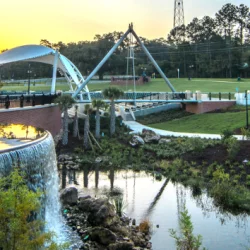5 Tips for Investing in Equestrian Property
Whether you’re a bonafide horse-lover looking to purchase property that allows you to bring your equines home rather than paying to stable them elsewhere or you’re interested in the prospect of renting out equestrian-zoned land commercially (to breeders, public stables, or riding schools, for example), you may be looking to invest in real estate that offers the option to house horses. But you’ll find that this type of investment is a little different than purchasing a family home, rental property, or your average piece of commercial real estate. There are specific things you’ll want to look for when it comes to purchasing equestrian property. Here are just a few criteria that will have to make the grade before you consider laying out the cash for this particular type of real estate.
- Check for proper zoning. This is the number one priority when it comes to investing in equestrian property. You must make sure that it is zoned for the intended usage. Every city is bound to have its own ordinances regarding “horse privileges”, so you need to make sure that a property meets those requirements before you finalize the purchase. And keep in mind that commercial interests will likely require a separate set of permits in order run an equestrian business on the property. So the usage you have in mind for your parcel could have a decided impact on the types of zoning and permits needed, something that could definitely affect your interest in investment.
- Consider acreage. Zoning laws should specify the minimum amount of land required to house a certain number of large-breed animals such as horses. But you might also want to consider how much land you think an individual animal needs. A 10,000 square foot minimum may be fine if you have a single horse and you exercise your animal regularly. But if you plan to let a large herd of horses loose on your land to graze and exercise themselves, you’ll probably want significantly more acreage at your disposal. And the topography and geographic features could be important, too. You don’t want your horses falling off a cliff, hiding in ravines where they’re hard to round up, or freezing due to exposure, for example.
- Fencing. If you’re purchasing a large parcel of land meant for horses to roam, one feature that could make or break your decision to buy is fencing. It is extremely expensive and time consuming to install on your own, so you’ll no doubt want a property that is already outfitted with appropriate fencing that is in good repair. And you should be willing to pay a bit more for this feature.
- Outbuildings. It’s not as though you can bring your horses into your home or leave them outside all the time. They need their own shelter and you’ll have to store their gear and feed somewhere. For this reason you should assess the outbuildings available on an equestrian property before you buy. You’ll want a stable/tack house and a barn (for feed) at the very least, but a covered riding ring/arena is also a nice addition, especially for commercial prospects. Consider that building these structures will entail no small expense, so having them on the property already is a major bonus.
- Location. You’ll have plenty of time to think about outfitting your lunging ring with a ceiling-mounted horse walker and replacing the horse stall mats in your stable once the sale has gone through and you’re the proud owner of equestrian property. But before you sign on the dotted line, think about what the location means for your life. Most properties that are zoned for horses are not exactly in bustling urban areas; they’re outside city limits, and sometimes far from a town and its amenities, especially if you buy significant acreage. This could drastically impact your life, so you’ll want to be sure that your horses can not only live with the property you choose to invest in, but that you and your family can, as well.
More to Read:
Previous Posts:




